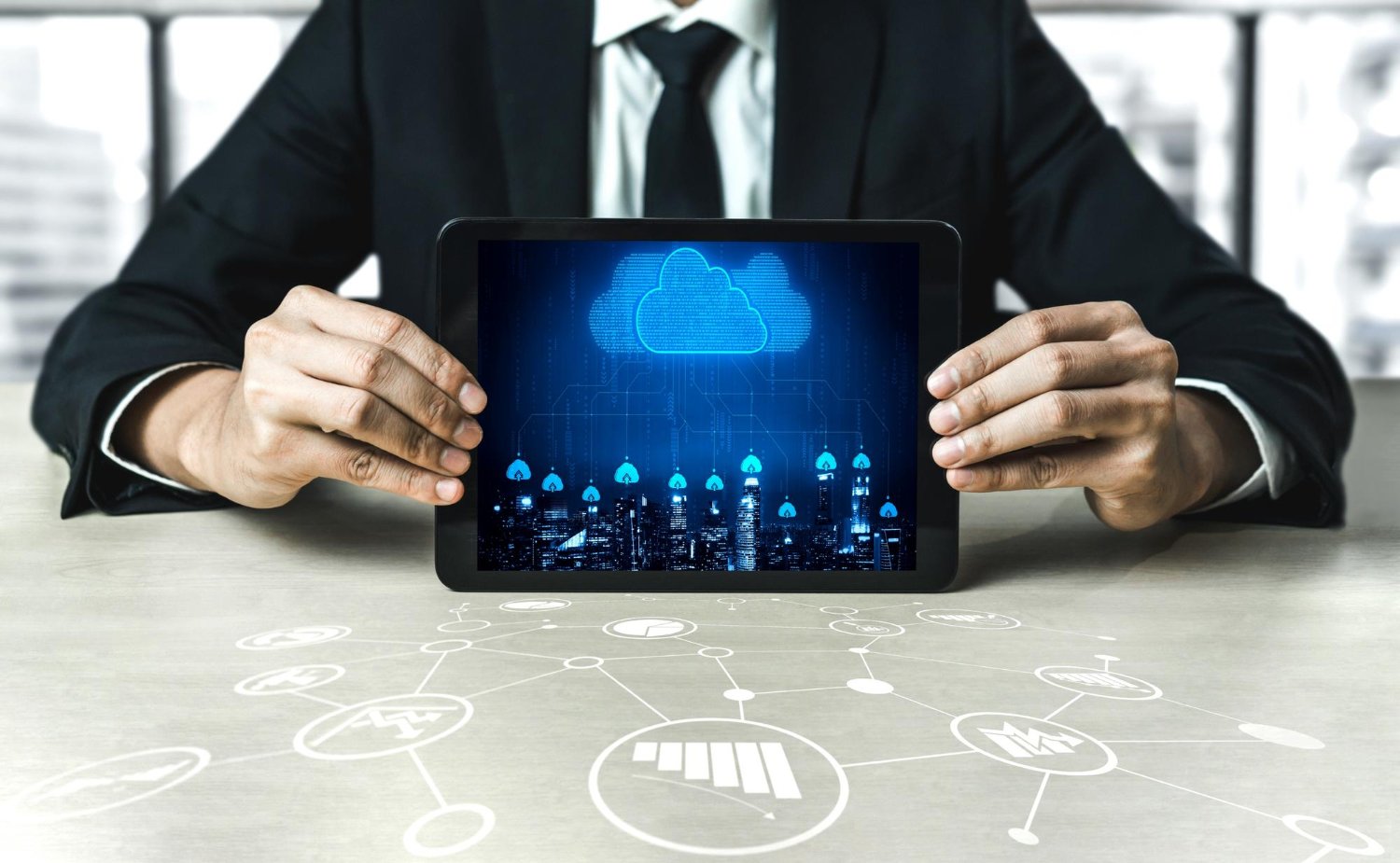
Cloud ERP and Business Resilience: Strategies for Navigating Uncertainty
In today’s volatile business landscape, organizations face unprecedented challenges—from global pandemics and supply chain disruptions to economic fluctuations and cybersecurity threats. The ability to adapt quickly to changing circumstances has become a defining characteristic of successful enterprises. This is where the convergence of cloud Enterprise Resource Planning (ERP) systems and business resilience strategies creates a powerful framework for navigating uncertainty.
Understanding the Foundations: Cloud ERP and Business Resilience
What Makes Cloud ERP Different?
Cloud ERP represents a fundamental shift from traditional on-premise solutions. Rather than hosting software and data within physical company infrastructure, cloud ERP delivers applications over the internet, with data stored in secure remote servers. This transformation brings numerous advantages:
- Accessibility: Users can access the system from anywhere with an internet connection
- Scalability: Resources can be adjusted based on current business needs
- Reduced IT overhead: Maintenance and updates are managed by the provider
- Enhanced security: Leading cloud providers often implement more robust security measures than most individual businesses can afford
- Continuous innovation: Regular updates ensure businesses always have access to the latest features
The shift to cloud-based models has revolutionized how businesses approach their core operations, particularly in times of disruption.
Defining Business Resilience in the Modern Context
Business resilience goes beyond simple disaster recovery planning. It encompasses an organization’s ability to:
- Anticipate potential disruptions
- Prepare appropriate response strategies
- Adapt to changing conditions
- Recover quickly from setbacks
- Transform challenges into opportunities for growth
In essence, resilient businesses don’t merely survive disruptions—they emerge stronger because of them. This capability has become increasingly crucial as businesses face more frequent and varied challenges.
How Cloud ERP Enables Business Continuity
Remote Workforce Empowerment
When traditional office environments become unavailable, cloud ERP systems provide the critical infrastructure needed to maintain operations. During the COVID-19 pandemic, organizations with cloud-based systems demonstrated clear advantages:
- Seamless transition to remote work arrangements
- Continued access to critical business information and processes
- Maintained collaboration across distributed teams
- Ability to serve customers without interruption
Companies that relied solely on on-premise ERP systems often struggled with makeshift remote access solutions, limited functionality, and significant delays in business operations.
Real-Time Decision-Making During Crises
In uncertain times, the quality and timeliness of information become paramount. Cloud ERP provides:
- Real-time visibility across all business functions
- Centralized data from multiple sources
- Advanced analytics for scenario planning
- Mobile dashboards for executives making critical decisions
When facing supply chain disruptions, financial volatility, or sudden market shifts, this informational advantage can be the difference between proactive management and reactive crisis control.
Ensuring Data Security and Protection
Business continuity depends on data integrity and availability. Cloud ERP offers superior protection through:
- Geographic redundancy across multiple data centers
- Automated backup procedures
- Enhanced disaster recovery capabilities
- Advanced security protocols and continual updates against emerging threats
While cybersecurity threats continue to evolve, leading cloud ERP providers dedicate substantial resources to maintaining robust security measures that typically exceed what individual businesses can implement independently.
Strategic Implementation for Maximum Resilience
Assessing Organizational Vulnerabilities
Before implementing a cloud ERP solution, businesses should conduct a thorough assessment of their current vulnerabilities:
- Which business processes are most critical?
- What are the single points of failure in current operations?
- Which disruption scenarios would most severely impact the business?
- What current recovery capabilities exist?
This assessment forms the foundation for a strategic implementation that prioritizes resilience in the most essential areas.
Integration with Business Continuity Planning
Cloud ERP should not be viewed in isolation but as an integral component of comprehensive business continuity planning:
- ERP processes should align with designated recovery time objectives
- System capabilities should support predefined business continuity scenarios
- Recovery procedures should be documented and regularly tested
- Training should prepare staff to leverage ERP features during disruptions
When cloud ERP is integrated into broader business continuity strategies, organizations can ensure their technical capabilities align with their operational requirements during disruptions.
Creating a Culture of Resilience
Technology alone cannot create resilient organizations. Leaders must foster a culture that embraces:
- Proactive risk identification
- Continuous improvement through lessons learned
- Cross-functional collaboration during disruptions
- Agility in response to changing conditions
Cloud ERP can support this culture by providing the tools and information needed for teams to adapt quickly, but the human element remains crucial to effective resilience strategies.
Cloud ERP Across Different Industry Sectors
Manufacturing: Navigating Supply Chain Disruptions
Manufacturing operations face unique challenges during disruptions, particularly related to supply chain volatility and production continuity. Cloud ERP helps by providing:
- Complete supply chain visibility from raw materials to finished products
- Predictive analytics to identify potential disruptions before they occur
- Alternative supplier management capabilities
- Flexible production scheduling to adapt to changing conditions
- Inventory optimization across multiple locations
Manufacturers with robust cloud ERP implementations have demonstrated superior ability to navigate supply chain challenges, from pandemic-related shortages to geopolitical disruptions affecting global trade.
Financial Services: Maintaining Compliance During Disruption
Financial institutions must maintain regulatory compliance even during crisis situations. Cloud ERP supports this requirement through:
- Automated compliance processes that continue functioning regardless of disruption
- Comprehensive audit trails for all transactions
- Secure customer data protection meeting regulatory standards
- Consistent application of financial controls across distributed operations
When normal business operations are disrupted, these automated compliance capabilities ensure financial institutions can maintain regulatory standing while focusing recovery efforts on customer service and business continuity.
Retail: Adapting to Rapidly Changing Customer Demands
The retail sector experiences dramatic shifts in customer behavior during economic uncertainty. Cloud ERP enables retailers to:
- Quickly adjust inventory levels based on changing demand
- Implement omnichannel strategies to serve customers through different channels
- Optimize pricing strategies during volatile periods
- Manage cash flow effectively when sales patterns fluctuate
Retailers leveraging cloud ERP have demonstrated remarkable agility in pivoting business models, such as rapidly scaling up e-commerce operations when physical stores face restrictions.
Healthcare: Ensuring Continuous Patient Care
Healthcare organizations cannot afford operational disruptions that affect patient care. Cloud ERP supports continuity through:
- Secure access to patient information from any location
- Efficient supply chain management for critical medical supplies
- Staff scheduling optimization during crisis situations
- Financial management to navigate complex reimbursement challenges during disruptions
The healthcare organizations that weathered recent challenges most effectively often had cloud-based systems that maintained operational continuity even when physical facilities faced significant constraints.
The Evolution of Cloud ERP for Enhanced Resilience
AI and Machine Learning Integration
The next generation of cloud ERP solutions leverages artificial intelligence and machine learning to further enhance business resilience:
- Predictive analytics that forecast potential disruptions before they occur
- Automated decision-making for routine responses to common challenges
- Anomaly detection that identifies unusual patterns requiring investigation
- Continuous learning from past disruptions to improve future response
As these technologies mature, they transform cloud ERP from a reactive tool to a proactive system that anticipates challenges and recommends appropriate responses before significant business impact occurs.
Advanced Cyber Resilience Capabilities
As cyber threats become more sophisticated, cloud ERP systems are evolving enhanced protection features:
- Zero-trust architecture that verifies every user and system interaction
- Advanced encryption for data both in transit and at rest
- Continuous security monitoring with AI-powered threat detection
- Automated patching to close vulnerabilities quickly
These capabilities help organizations maintain operations even in the face of growing cyber threats, establishing cyber resilience as a core component of overall business resilience.
Hybrid Deployment Models for Maximum Flexibility
While pure cloud solutions offer significant advantages, some organizations are adopting hybrid approaches that combine:
- Cloud-based applications for maximum accessibility
- Local processing capabilities for operations requiring minimal latency
- On-premise data storage for certain highly sensitive information
- Edge computing for remote locations with connectivity challenges
These hybrid models allow businesses to customize their ERP architecture based on specific resilience requirements, regulatory considerations, and operational constraints.
Implementation Strategies for Maximum ROI
Calculating the True Cost of Cloud ERP Implementation
Implementing cloud ERP requires careful financial analysis that goes beyond simple subscription costs:
- Initial implementation expenses including data migration and customization
- Integration costs with existing systems that will remain operational
- Training and change management expenses
- Potential productivity impacts during transition periods
However, this analysis should be balanced against the significant cost of business disruptions that cloud ERP helps mitigate, including:
- Revenue losses during operational downtime
- Recovery costs after disruptions
- Reputation damage and customer attrition
- Competitive disadvantage from slower market response
When viewed through the lens of resilience, the ROI calculation for cloud ERP extends far beyond traditional operational efficiency metrics.
Phased Implementation Approaches
Rather than attempting a complete system overhaul, many organizations achieve better results through phased implementation:
- Begin with the most critical business functions that would be most severely impacted by disruption
- Establish core financial and operational capabilities in the cloud
- Gradually extend to additional business processes
- Continuously refine and optimize based on lessons learned
This approach minimizes risk while allowing the organization to build competency and confidence in cloud technologies progressively.
Measuring Success Beyond Traditional Metrics
Evaluating cloud ERP implementation requires expanding beyond conventional ROI metrics to include resilience-focused measures:
- Reduction in recovery time following simulated disruptions
- Improvements in decision quality during crisis scenarios
- Ability to maintain customer service levels during challenging periods
- Enhanced ability to capitalize on market opportunities during volatile conditions
Organizations that establish these resilience-focused KPIs can better assess the true value of their cloud ERP investments beyond day-to-day operational efficiency.
Overcoming Implementation Challenges
Change Management for Successful Adoption
The most sophisticated cloud ERP system provides little value if users resist adoption. Effective change management requires:
- Clear communication about how the system supports both individual and organizational resilience
- Robust training programs that emphasize resilience-related features
- Executive sponsorship demonstrating commitment to the new approach
- Recognition of staff who embrace and champion the system
Organizations that invest in comprehensive change management experience faster time-to-value and higher utilization of resilience-enhancing features.
Data Migration and Integration Strategies
Moving to cloud ERP presents significant data challenges that must be carefully managed:
- Cleansing and validating existing data before migration
- Establishing consistent data governance policies
- Creating robust integration with remaining on-premise systems
- Developing data recovery procedures specific to the cloud environment
Careful planning in these areas ensures the new system has the information foundation needed to support effective decision-making during disruptions.
Security and Compliance Considerations
Organizations in highly regulated industries face additional implementation challenges:
- Ensuring cloud deployments meet specific regulatory requirements
- Documenting compliance processes for auditors
- Addressing data sovereignty considerations for global operations
- Implementing appropriate access controls for sensitive information
Working closely with both cloud ERP providers and compliance experts helps organizations navigate these complex requirements while maintaining the resilience benefits of cloud deployment.
Future Trends in Cloud ERP and Business Resilience
Autonomous ERP Systems
The future of cloud ERP points toward increasing autonomy:
- Self-healing systems that automatically recover from failures
- Self-optimizing processes that adapt to changing conditions without human intervention
- Proactive maintenance that addresses issues before they impact operations
- Continuous optimization based on operational patterns and external factors
These capabilities will further enhance business resilience by reducing the need for human intervention during disruptions and enabling faster, more consistent responses to challenges.
Extended Ecosystem Integration
Future cloud ERP systems will extend integration beyond organizational boundaries:
- Seamless connectivity with supplier and customer systems
- Collaborative planning capabilities across the entire value chain
- Shared visibility into potential disruptions affecting multiple organizations
- Coordinated response strategies across business partners
This ecosystem approach recognizes that true resilience extends beyond individual organizations to encompass entire value chains and business networks.
Sustainability and Resilience Convergence
Increasingly, business resilience and sustainability objectives are converging:
- Environmental, Social, and Governance (ESG) considerations integrated into ERP reporting
- Resource optimization that supports both cost reduction and environmental goals
- Supply chain visibility that enables both resilience and sustainability monitoring
- Risk management that encompasses both operational and environmental factors
Forward-thinking organizations are leveraging cloud ERP to address these converging priorities, recognizing that sustainable operations are inherently more resilient over the long term.
Strategic Recommendations for Leaders
Executive-Level Considerations
For C-suite leaders considering cloud ERP as part of resilience strategy:
- Position cloud ERP as a strategic investment in organizational capability, not merely an IT initiative
- Establish clear governance structures that balance innovation with appropriate controls
- Develop comprehensive risk management frameworks that leverage cloud ERP capabilities
- Create a roadmap that aligns ERP evolution with broader business transformation goals
Executive involvement ensures cloud ERP implementation serves strategic resilience objectives rather than focusing solely on tactical improvements.
Middle Management Imperatives
Departmental and functional leaders play crucial roles in translating strategy into practical implementation:
- Identify specific resilience requirements within each functional area
- Document critical processes that must be maintained during disruptions
- Define key performance indicators that reflect both efficiency and resilience
- Champion adoption within teams by emphasizing resilience benefits
When middle managers actively engage with cloud ERP implementation, the resulting system more effectively addresses practical operational needs during both normal and disruptive periods.
IT Leadership Responsibilities
Technology leaders must balance innovation with practical implementation considerations:
- Establish robust architecture that prioritizes resilience alongside performance
- Develop appropriate security frameworks specific to cloud environments
- Create effective integration strategies for complex system landscapes
- Build internal competencies in cloud technologies and resilience-focused configurations
The technical foundations established by IT leadership determine how effectively the cloud ERP system will support business continuity during challenging circumstances.
Case Studies: Resilience in Action
Manufacturing Sector: Overcoming Supply Chain Disruption
A mid-sized industrial equipment manufacturer implemented cloud ERP just months before a major supply chain disruption affected their industry. The system enabled them to:
- Quickly identify alternative suppliers for critical components
- Adjust production schedules to prioritize products with available materials
- Provide customers with accurate delivery projections despite uncertain conditions
- Maintain financial stability through careful cash flow management
While competitors struggled with weeks of operational disruption, this manufacturer maintained over 85% of normal production capacity, retained key customers, and even captured market share from less adaptable competitors.
Financial Services: Maintaining Operations During Physical Facility Closure
When a regional bank faced extended closure of their headquarters due to an environmental emergency, their recently-implemented cloud ERP system proved invaluable:
- Core banking operations continued without interruption
- Customer service representatives worked remotely with full system access
- Compliance reporting continued on schedule despite the disruption
- Management maintained visibility into operations through cloud-based dashboards
The bank’s regulators specifically cited their cloud infrastructure as a model for operational resilience in the financial services sector.
Retail: Pivoting During Economic Uncertainty
A multi-channel retailer leveraged their cloud ERP system to navigate dramatic market shifts during economic uncertainty:
- Rapidly scaled e-commerce operations when physical store traffic declined
- Adjusted inventory levels and purchasing to reflect changing consumer preferences
- Implemented new fulfillment models including curbside pickup and home delivery
- Optimized staffing across different business functions as demand patterns shifted
The retailer’s ability to quickly adapt their business model allowed them to maintain profitability despite a 30% drop in traditional store sales, demonstrating remarkable resilience in a severely impacted sector.
Conclusion: Building the Resilient Enterprise
The convergence of cloud ERP technology and business resilience strategy represents a powerful approach to navigating uncertainty. Organizations that successfully implement these systems while focusing on resilience objectives position themselves not merely to survive disruptions but to thrive because of their superior adaptability.
As we look toward an increasingly uncertain future, this capability will likely become a defining characteristic of successful enterprises across all sectors. The question for business leaders is not whether to invest in cloud ERP for resilience, but how quickly and effectively they can implement these systems to prepare for whatever challenges lie ahead.
The most resilient organizations recognize that technology alone is insufficient—they combine robust cloud ERP systems with adaptive cultures, clear governance structures, and continuous improvement mindsets. This holistic approach transforms potential disruptions from existential threats into opportunities for innovation and competitive differentiation.
In a business environment where change is the only constant, cloud ERP provides the technological foundation for organizations to not just weather the storm, but to harness its energy for transformation and growth.
FAQ's
Cloud ERP delivers enterprise resource planning functionalities over the internet, with data stored on secure remote servers managed by third-party providers. In contrast, traditional ERP systems are hosted on-premises, requiring in-house infrastructure and maintenance. Cloud ERP offers benefits such as accessibility from any location with an internet connection, scalability to adjust resources based on business needs, reduced IT overhead, and enhanced security measures implemented by cloud providers.
Cloud ERP enhances business resilience by providing real-time visibility into operations, facilitating remote workforce collaboration, and ensuring data security through advanced protection measures. This enables organizations to anticipate potential disruptions, adapt to changing conditions, and recover quickly from setbacks.
Yes, Cloud ERP systems are designed to support remote work by allowing users to access critical business information and processes from any location with an internet connection. This ensures seamless collaboration across distributed teams and maintains operational continuity during disruptions that prevent access to physical office environments.
Cloud ERP provides centralized data and advanced analytics, offering real-time visibility across all business functions. This enables executives to make informed decisions quickly during crises, such as supply chain disruptions or sudden market shifts, by accessing up-to-date information and scenario planning tools.
Cloud ERP systems implement advanced security protocols, including encryption, automated backups, and disaster recovery capabilities. Leading cloud providers often have robust security measures that comply with industry standards and regulations, ensuring data integrity and availability even during disruptions.
Implementing Cloud ERP can present challenges such as data migration complexities, integration with existing systems, customization limitations, and the need for comprehensive change management to ensure user adoption. Organizations must carefully plan and execute their implementation strategies to address these challenges effectively.
In the manufacturing sector, Cloud ERP provides complete supply chain visibility, predictive analytics to identify potential disruptions, and flexible production scheduling. These features enable manufacturers to anticipate issues, manage alternative suppliers, and optimize inventory, thereby enhancing their ability to navigate supply chain challenges.
Yes, Cloud ERP systems automate compliance processes, maintain comprehensive audit trails, and secure sensitive data, ensuring that organizations adhere to regulatory standards even during disruptions. This is particularly crucial for industries like financial services, where compliance is mandatory regardless of operational challenges.
Cloud ERP enables retailers to quickly adjust inventory levels, implement omnichannel strategies, optimize pricing, and manage cash flow effectively. This agility allows retailers to adapt to rapidly changing customer demands and market conditions, maintaining competitiveness during economic fluctuations.
Future trends in Cloud ERP include the integration of artificial intelligence and machine learning for predictive analytics and automated decision-making, advanced cyber resilience capabilities to counter evolving threats, and hybrid deployment models that combine cloud-based applications with on-premises systems for maximum flexibility. These advancements will further strengthen organizations' ability to navigate uncertainty and enhance resilience.







